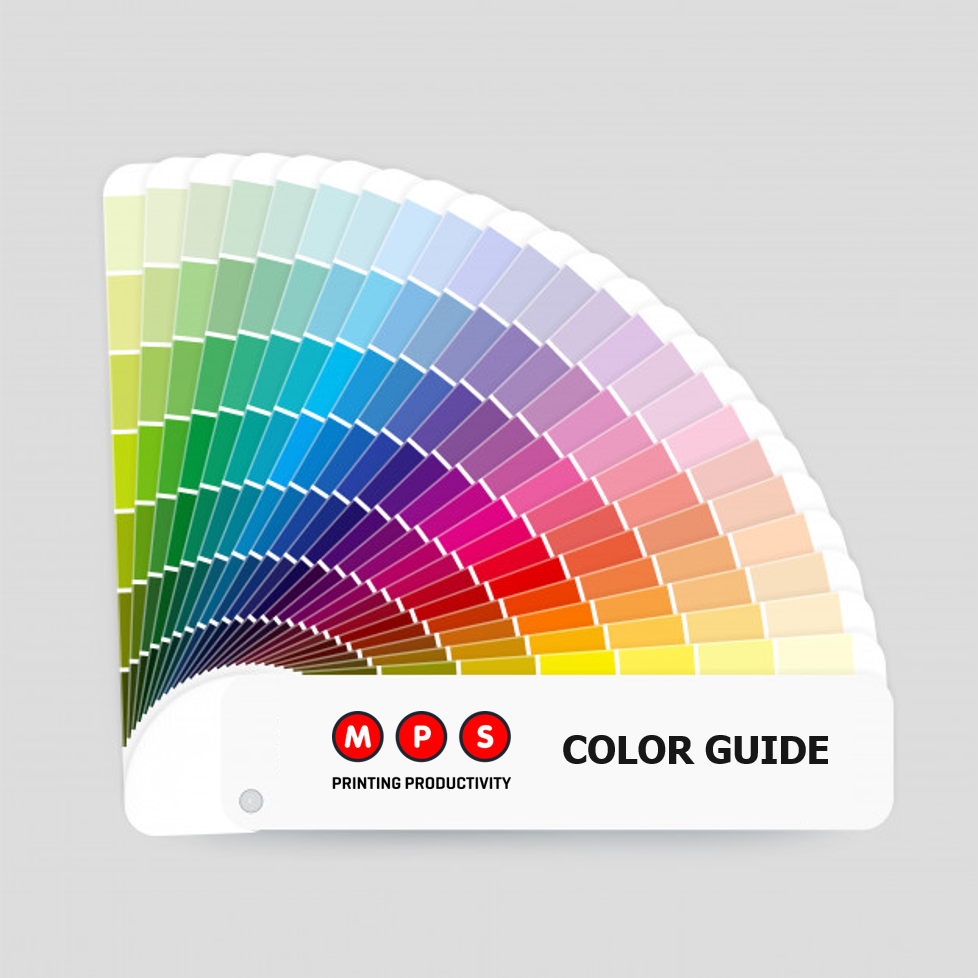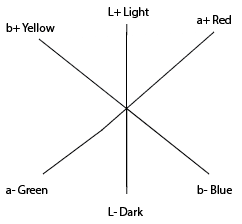In this blog, I’ll go over some basics about the types of inks used in the flexographic printing process and colour matching using L.a.b.
Three main types of inks are used in flexographic printing: water based, UV and solvent based. Which ink you choose is dependent on various requirements of the print job (pharma, healthcare, food and beverage etc.).
Introduced by Richard Hunter in the 1940’s, L.a.b. is an international standard in colour values but was not fully adopted until some 30 years later by the International Commission on Illumination (CIE). This international standard is now called CIELab or L.a.b.

Water based inks
- These inks are made from water and pigment (colour) and can contain additives such as defoamers and drying agents like crosslinker. This helps the ink dry faster at lower temperatures, and also helps with infringement rolls and other poly type materials by adding a water-resistant property. (If using thermal stock, the crosslinker is applied on the non-thermal side).
- Used on various substrates from corrugated paper for cups, thermal rolls, carpark tickets, self-adhesive, and poly products as the inks have elastic properties and other benefits. Water based inks are also advantageous for food grade products - confirm compatibility with your supplier and be sure to ask for the material safety data sheet (MSDS), as audits for food products require a maximum mercury level and other toxins. Consider the Hazard Analysis and Critical Control Points (HACCAP) approach.
- Viscosity of water based inks is very important, as this determines the colour along with the correct selection of anilox.
- Dried with hot air or heat lamps.
UV inks
- UV inks are made from prepolymers, monomers, photoinitiators and pigments (colour).
- These inks will only dry and adhere to the substrate once passes through a UV lamp, and are usually cooled by a chill drum after the drying process. Chill plates can also be used.
- Unlike water based inks, UV inks have a higher viscosity and are not adjusted. You can add a photoinitiator to the ink to help it key to the substrate - 3 to 5% maximum as the ink will usually have this already supplied.
- Labels in a range of products use UV inks - boarding passes, healthcare, wine & spirits, food & beverage and more. A low migration ink may be required for food packaging.
Solvent based inks
- Solvent based inks are made from alcohol, acetate and pigment (colour)
- These inks are dried by hot air and on a central impression (CI) press with inter-colour dryers and a heat tunnel above the machine, with a chill drum after exiting the heat tunnels. This helps to stop the stretching of material such as poly.
- 3 to 5% wax can be added to help adhesion (rub and scuff resistance).
- On a narrow web flexo press, solvent based inks will only be used in between units.
- Solvent based inks also use viscosity to control colour, and solvent is added to keep the viscosity stable with the use of a Zahn cup. You can also add solvents to help speed the drying process such as NP or EA acetate, or to slow drying with a solvent such as ethoxy propanol.
- Solvent based inks are mostly used in flexible packaging such as shopping bags, bread bags, spice satchels and other requirements.
There are many options of inks available for different types of jobs and processes. The type of ink you need when buying a new press or using your old press is also dependent on the dryer selection: hot air or UV, chill drum or chill plate, or both.
Other considerations are the ink manufacturing company, substrates, corona treatment and even using the correct tape for QC testing (3M 810 UV inks and 610 for water based inks).
Colour matching with L.a.b. values
The L.a.b. colour value measurement is similar to the longitude and latitude for geographic coordinates, providing measurements to help us in locate and match the colour within the specified Delta reading.
For the L.a.b. values we need to understand what they mean and represent:
- L* : Lightness Dark / Light (L- is Dark move towards L+ is lighter)
- a* : Green / Red Value (a- is Green move towards a+ is Red)
- b* : Blue / Yellow Value (b- is Blue move towards b+ is yellow)

This is a simple diagram I draw for printers when training about colour matching and using L.a.b. for achieving Delta of the colour.
When checking colour, you first need a reference from you PMS Pantone book. Make sure to use a coated or uncoated PMS book, depending on the stock you are using.
Next you need to take a reference scan, then scan again under the sample tab and the reading should be close to zero on all L.a.b.
Now scan your printed sample using a spectrophotometer and start to tweak - always adjust the L* value to get the correct colour strength before adjusting a* and b* values.
Once you have the L* value close to zero, now you look at the a* and b* values. If your b* value says b* -3.36 it is too blue - you will need to add yellow to bring it closer to zero.
If your a* value is a* 4.78 it is too red - you will need to add green.
When all your colours are close, your top reading with this symbol of a triangle represents the Delta E value.
One of the big supermarket chains I printed for has specified a Delta of 2.0 or less. This keeps all their products a consistent colour – regardless of which company prints their products.
This is a good idea, and most companies will have an ink technician that will make and adjust colours for the printer. But this is not always the case, so it’s good to understand L.a.b. and Delta values. It makes colour matching easier and less frustrating for the printer - especially new printers.
Get in touch
This is a quick overview of inks for flexographic printing and L.a.b. There’s much more to discuss and lots of in-depth articles on the internet.
If you have any questions, please contact me here. Feedback is also appreciated!